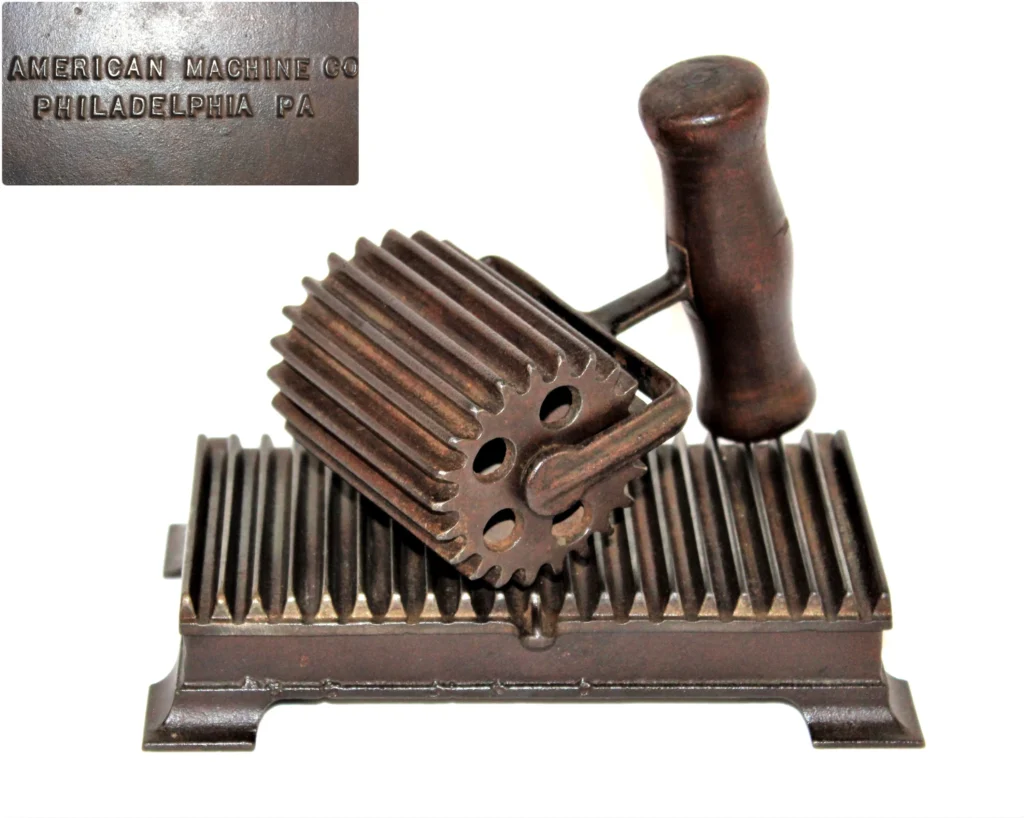The Intriguing Antique: The Goffering Iron
This peculiar-looking contraption might not be recognizable to modern eyes, but it’s a fascinating tool from the past known as a goffering iron. It was used for a specific type of fabric decoration called goffering, which involved creating intricate pleats, crimps, or embossed patterns in fabric.
How Did it Work?
The goffering iron was typically made of metal, often iron or steel, and consisted of two hinged plates with engraved designs or ridges. The fabric would be placed between the plates, and then the iron would be heated over a fire or stove. The heat would set the pleats or patterns into the fabric, creating a beautiful, textured effect.

A Touch of Elegance
Goffering was a popular decorative technique in the 16th to 19th centuries, used to adorn clothing, linens, and other textiles. It was often seen on collars, cuffs, ruffs, and even entire dresses. The intricate patterns created by goffering added a touch of elegance and luxury to garments, making them stand out.

A Lost Art
Goffering was a labor-intensive process that required skill and patience. As fashion trends changed and new technologies emerged, goffering gradually fell out of favor. Today, it’s considered a lost art, but examples of goffered textiles can still be found in museums and historical collections, offering a glimpse into the intricate craftsmanship of the past.
